
With the new release of the Canon Cinema EOS C500 MkII, I wanted to give a long-time Canon Cinema EOS user’s perspective on the impressive new release. Canon has done something I haven’t seen from them in a long time with this camera and it’s exciting.
It all started September 17th, 2008 with the 5D MkII
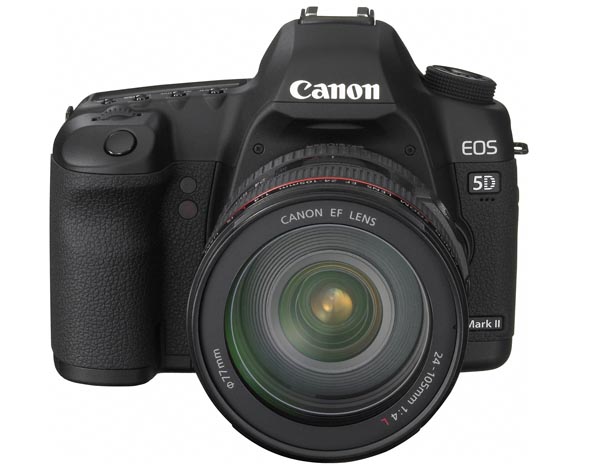
I, like many of you, was head over heels for the 5D MkII and the ability to shoot full-frame HD video that looked like nothing we had ever seen before in this market. Very shallow depth of field with that Canon color, captured at 30 frames per second. Yeah, that was a bit of an issue! Canon fixed that with a firmware update in 2010. It did take a long time, but the 5D MKII captured our imagination and sparked creativity with a look we had never seen before thanks to the full-frame sensor and the color that Canon is famous for.
A side note on the 5D MkII: Photojournalist starting asking Canon for video in stills cameras, since print media was moving to the web as well and they thought it would be great to have video clips from locations they were covering. A Canon engineer looked into it and discovered it was possible so Canon included the feature in the 5D MkII. At the time Canon didn’t realize (along with the Nikon D90) that they’d created an entirely new category!
Canon Introduces the C300
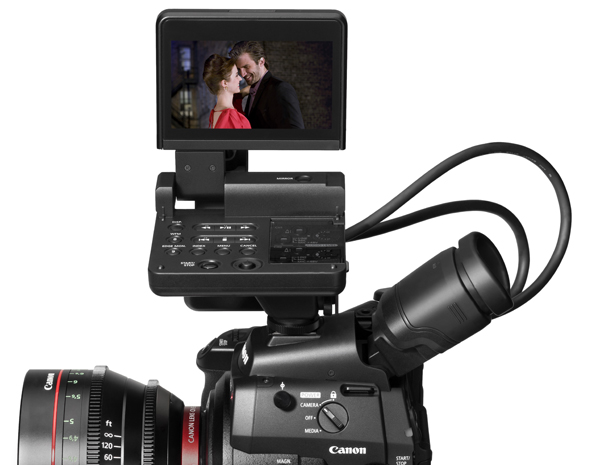
Canon realized they just created something really special with the capability of video on the 5D MkII and wanted to capitalize on it with a whole new product. It took four years to develop. The Cinema EOS line was launched in late 2011 with the Cinema EOS C300 and starting shipping on January, 24th 2012.
Canon didn’t use a full-frame sensor in the first C300 camera however, they instead went with an S35 sensor since that was considered more common for filmmaking, plus Canon added all the stuff we need for proper video capture with ND filters, XLR audio, and an EVF.
I remember how much debate and hate followed, due to the high price point of $16,000 US. Hmm. That’s interesting, right? The new C500 MKII in 2019-eight years later-is also priced at $16,000. I feel 5D MkII users expected a camera that cost $3,500 with a full-frame sensor. Oh, those pesky consumers! We want it all for the price of a cheeseburger and fries! While the image looked great the price was out of my league to buy, so I kept on creating with the Panasonic AF-100.
I was renting the C100 and using the AF-100 a lot at the time of release. So much so the station decided to buy a C300. (Take this one as advice.) That might have been the single best day ever at NBC 7! Having the C300 available to me without the hassle of renting was so great. I shot a ton of promos with it, and to this day we still have it, but it doesn’t get much use since we upgraded to a C300 MkII. It’s still a very good camera and the reliability is incredible. in seven years the camera has never failed or needed repair. Yes, the handle locking screw broke but that’s it. With so much use that is pretty remarkable.
My first Cinema Camera. The Panasonic AF-100
Let’s step back a bit. In 2010 Panasonic announced the AF-100. For me, that was a good move but maybe not so much for Panasonic since they never had a true MkII. With the popularity of the GH1, it was a natural progression to make an MFT Cine Camera. I, of course, owned the GH1 (and every iteration since!). It was an excellent camera as all the GH cameras have been. After pondering the idea I put in a pre-order and waited.
The AF-100 camera changed everything for me. It had proper audio, built-in ND filters and the MFT mount is very adaptable. I even got the PL bug! Those were some expensive times! I shot a bunch of promos for the local news station I worked for. Won some Emmys too. The camera really inspired me. Sometimes technology can do this. Not very often but when it does it really is exciting.
Alongside the AF-100, I was also shooting with a DVCPRO Panasonic ENG camera. All that shallow depth of field just made me giggle. I did continue to use the ENG camera for certain shoots that required the ergonomics of an ENG camera. I’ve always been a believer in using the right tool for the job and not letting the camera get in the way of telling your story. Frankenrigs just never worked for me to get the camera on my shoulder.
The AF-100 was a lot of fun but it did have some flaws. Mainly the way the highlights went yellow when blown out. Not pretty and I always had to be careful to avoid it. That made it tough to use outside and sometimes having blown out areas look fine but not if they are yellow.
I still used the 5D MkII on occasion. The image had that glossy wet paint look to it with a softness of film that just stood out. I settled for the more affordable AF-100 due to having the tools that I’m used to having on a proper video camera. But then Canon stepped up to with a new Cinema EOS entry. The C100.
An Affordable Cinema EOS Option. The C100
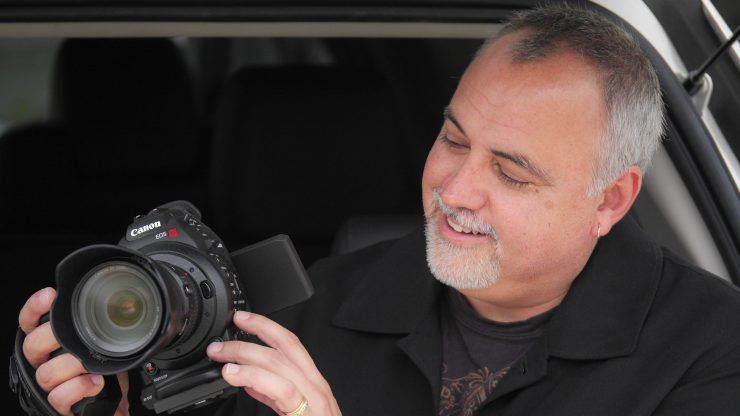
In 2012 Canon announced the Cinema EOS C100. A Canon cinema camera that I could actually afford to buy, but this time I decided to wait and rent one for a series of news image promos. I liked it a lot but the camera (like they all do) had some issues.
This was actually the first camera review I ever did. Looking back is always fun but you get the idea. I liked it a lot but it wasn’t perfect and to be honest no camera will ever be.
The C100 when first released didn’t have Dual Pixel Auto Focus. This was released later as an upgrade and cost $500. It was later offered in new models. DPAF changed autofocus going forward. To date, it’s still the best AF system around and Canon keeps making it better.
The C100 had the Canon color and CLog I like and after the first day of shooting and looking at the footage, it was clear to me that the C100 would be my next cinema camera. It wasn’t perfect by any means. The EVF was horrible. In fact, on the first camera I received, the EVF image had a blue tint to it so I had to get another one. It was better but not by much. I used an Atomos recorder a lot back then to get ProRes out with CLog. The image looked really good to me. One downside was it was only a 30p camera with no high-frame-rate options.
Back then, Canon stated that the EVF wasn’t a feature users cared about all that much so they went with the lesser quality. They learned fast that wasn’t the case. The LCD was also not so great in the sun and was behind the camera. The clearly designed the C100 as a 5D MkII video camera. Back then external monitors were pretty bad and the good ones cost as much as the camera. We have it so good now!
Audio input has always been an issue for me with the Cinema EOS cameras. Canon liked to use the handle for audio and continued to implement this up until the C200. With the C300 Canon doubled-down and added the LCD clamshell with audio inputs. This was the single most annoying aspect of the C300 and C300 MkII. I could write 1000 words on how much I hate this design but I digress. 😀
Canon C300 MKII
2015 brought the upgraded Canon C300 MKII. It’s a bit odd as it didn’t really innovate all that much. It added 4K and a better handle. Well sort of, but still used the horrid clamshell design with LCD and audio together. The real sell is it was 4K with improved codec and some higher frame rates plus 60p in HD. With all Canon cameras, the color science is very good. I didn’t think Canon could improve on it but they did. I rarely have to color correct my footage as the skin tone just looks so good. If you white balance correctly it just looks amazing.
Canon has a thing with high frame rates. I’m not sure why. Maybe it has to do with the quality of the image in higher frame rates. Many cameras offer 120 FPS but the IQ is bad and not usable in professional productions. So I feel Canon takes the stance that if it looks like crap then we won’t include it.
For 120fps you can shoot in full HD or 2K, but to deliver these high-speed shots, you had two major limitations. The camera only used a 1920×1080 or 2048×1080 portion from the center of the sensor. This means the field of view will become twice as narrow, essentially doubling your effective focal length. Oh, crop!
C300 MkII 4K Not So Great
I’ve been using the C300 MKII for a couple of years and while I love the color a lot (I think I mentioned this before) I feel the 4K image isn’t as detailed as it should be. I think I’m alone on an island in this one as it seems no one else feels this to be the case. The advantage of delivering in HD is having twice the resolution to work with but when I take a 4K image and use it at 100% it just loses detail. Almost soft, and sharpening in post doesn’t help much. Still, I use it a lot and no one complains. 😀
The C200
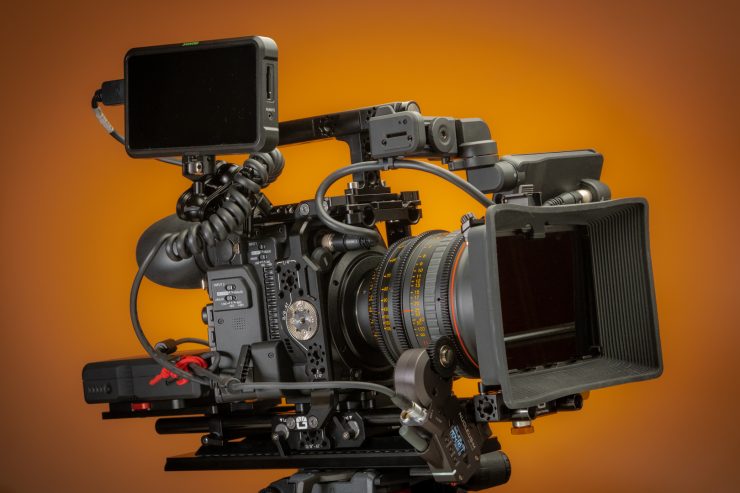
When the C200 came out I was a bit disappointed. Not in the actual camera but the fact that Canon fixed everything I didn’t like about the C300 and MkII but in a lesser model. Oh, why didn’t Canon make the C300 MkII with the C200 body and audio inputs and that new LCD off to the side? Goodbye clamshell! You won’t be missed but I do miss not having the C200 design on the C300 MKII.
The C200 is an excellent camera. Its 4K image is very solid and the lesser codec is actually very good for the majority of users. Heck, I think in my broadcast work it would hold up just fine. We don’t have codec requirements for acquisition in local broadcast. I could use my iPhone and I have for shots. In fact if the C200 was available at the time we upgraded I might have gone with it. Interesting right?
Is the C500 MKII my next Cinema EOS?
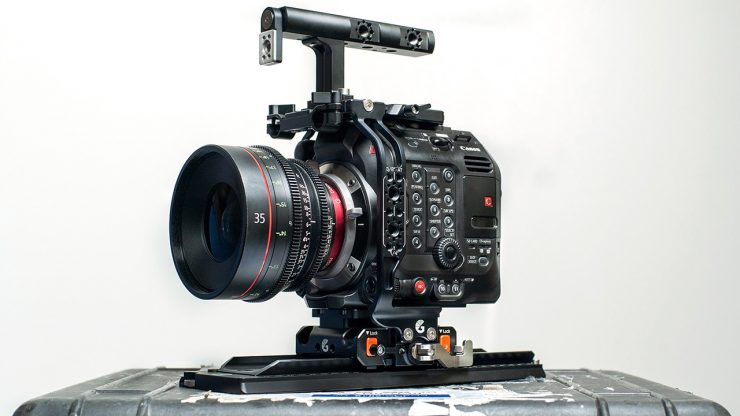
The $33,000 Canon C700 is a camera I don’t see myself using as it’s designed for an entirely different workflow than the one I use, however, Canon learned a lot by designing the C700. Plus I’m sure they got a lot of feedback and while I don’t see the camera being used on a lot of productions it did bring us the C500 MKII.
The C500 MKII on paper looks really impressive and is clearly a big step forward for Canon. They are taking the C700 and C200 design and morphing them together, plus the ability to use modules with features that some users would want keeps the cost down if you don’t need them or at least not at the time you purchased the C500 MkII. Having options after your initial purchase is very cool. This is very un-Canon-like and I’m already a fan!
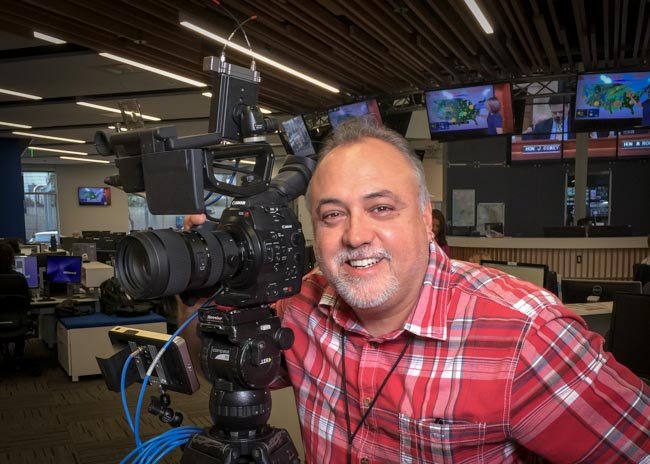
While I don’t see an upgrade happening anytime soon at the station I work at, I do feel the C500 MkII would be an excellent choice for the type of work I do. I like the C200 a lot and the C500 MkII ergonomically is on-par with it. And even more so with setup options and module upgrades.
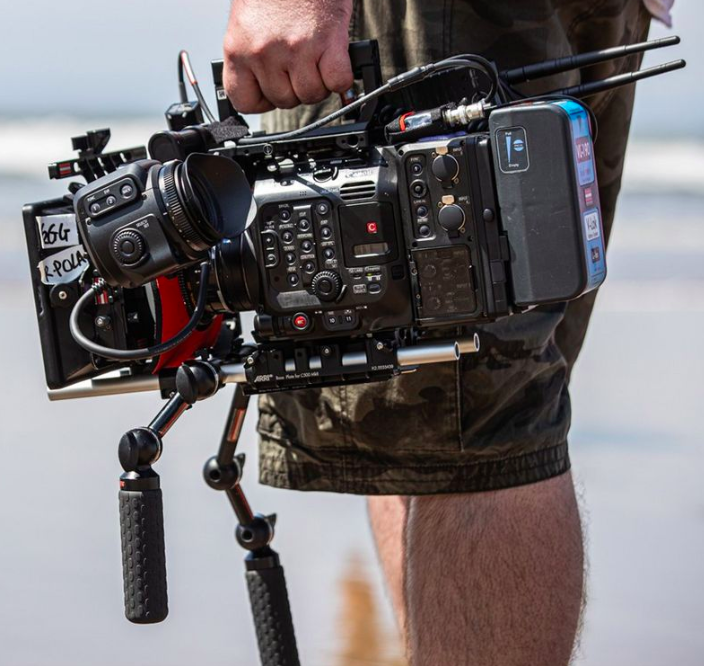
While I’m not big on full-frame video it’s where the industry is going. They have to innovate and full-frame isn’t necessarily new technology, but it is with digital cinema cameras and the lenses are available to exploit it.
Another advantage of having full-frame is cropping isn’t going to hurt as much. You still have the option to shoot S35 and even Super 16 with more frame rate options. Plus that Canon color I love so much! Bigger sensors, more pixels are always going to be growing but to me, the usability of the camera is so much more important than either. I love the options. The C500 MkII with its modular approach, while not an entirely new one, is something I’m very pleased to see Canon moving towards and I feel we will see more of this in future models.
One thing that is surprising is you can still buy a new C100 today for $1999. I wouldn’t recommend it for most users but it is surprising they continue to sell them.
That’s it for this one. What do see next for the Canon Cinema EOS line? Maybe a modular C200? Happy shooting!





